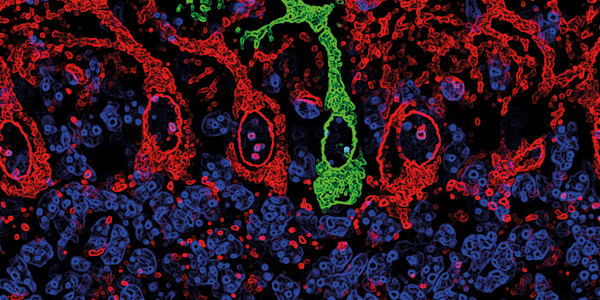With no cure available, a better understanding of the early pathological mechanisms in Alzheimer’s disease (AD) could be a huge step forward in the quest to treat the disease effectively, and to detect it earlier. Although many recent studies focus on biochemical tests, or neuroimaging techniques, some new research explores a very different angle – identifying those at increased genetic risk of AD by analyzing the way they navigate a virtual landscape
What inspired such an interesting approach? According to co-author of the associated paper (1), Nikolai Axmacher, the focus is on grid cells, found in the entorhinal cortex. In 2014, a team won the Nobel Prize in Physiology or Medicine, partly for demonstrating that grid cells are a crucial constituent of the brain’s positioning system, allowing for navigation (2). Earlier research also showed that functional magnetic resonance imaging (fMRI) could indirectly measure the function of the grid cell system (3). Finally, spatial disorientation is one of the first symptoms of AD, and altered activation of the medial temporal lobe has been found in previous fMRI studies of AD genetic risk carriers.

Nikolai and his team set out to discover if they could detect entorhinal dysfunction in subjects under 30 years old, who are APOE-ε4 carriers (and therefore at a higher genetic risk of developing AD), using fMRI and an object-location memory task which involved navigating in a virtual environment (see Figure 1). “We found that genetic risk carriers had strongly reduced ‘grid-cell-like representations’ (GCLRs) on fMRI – they were not impaired in spatial memory, but we found that participants with impaired GCLR activated their hippocampus (an adjacent brain region) to a larger degree. This had a direct behavioral consequence: genetic risk carriers navigated more often at the boundary (rather than in the center) of the virtual arena. Even though increased levels of hippocampal activation may be used to compensate for behavioral deficits, in the long-run they may facilitate the development of Alzheimer’s disease,” says Nikolai. Although the impaired grid cell function was expected by the researchers, the altered navigational preference was completely unanticipated – now, the team aims to further investigate the link between GCLR and early neuropathology. They also plan to test if GCLRs are impaired and navigational preference is altered, in older participants at a high genetic risk for AD, and in patients with early-stage disease. “It will be important to find out if fMRI and navigational behavior can be used as an early biomarker of Alzheimer’s disease. In the future, this may allow for a very early treatment of high-risk individuals,” adds Nikolai.
References
- L Kunz, et al., “Reduced grid-cell-like representations in adults at genetic risk for Alzheimer’s disease”, Science, 350, 430–433 (2015). PMID: 26494756. The Nobel Assembly at Karolinska Institutet, “The Nobel Prize in Physiology or Medicine 2014”, (2014). Available at: http://bit.ly/1uQ8riK. Accessed on October 28, 2015. CF Doeller, et al., “Evidence for grid cells in a human memory network”, Nature, 463, 657–661 (2010). PMID: 20090680.




